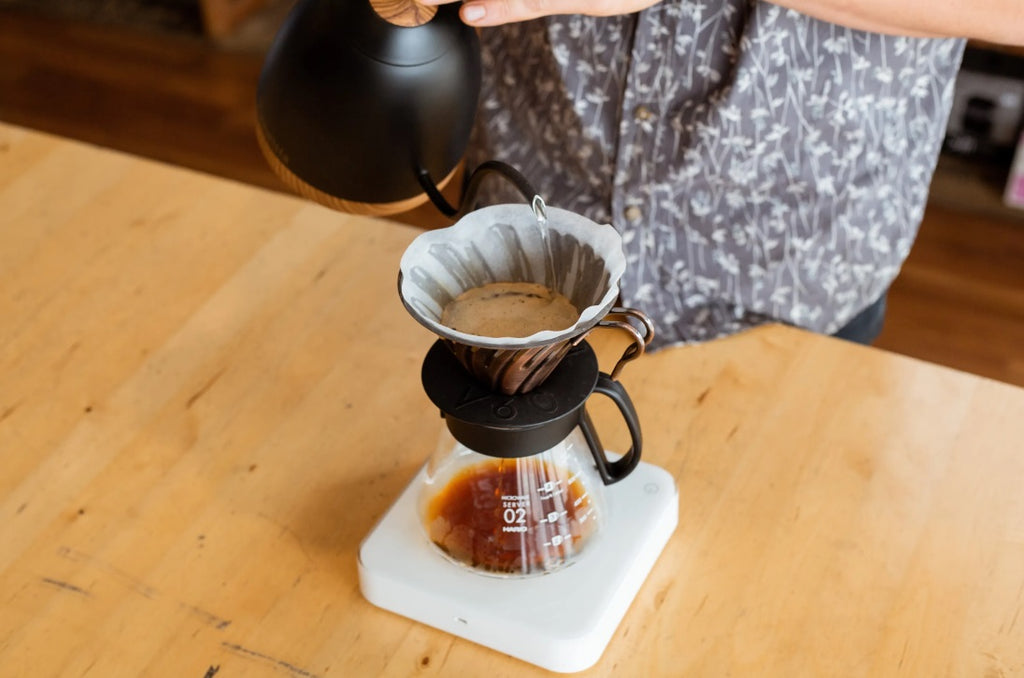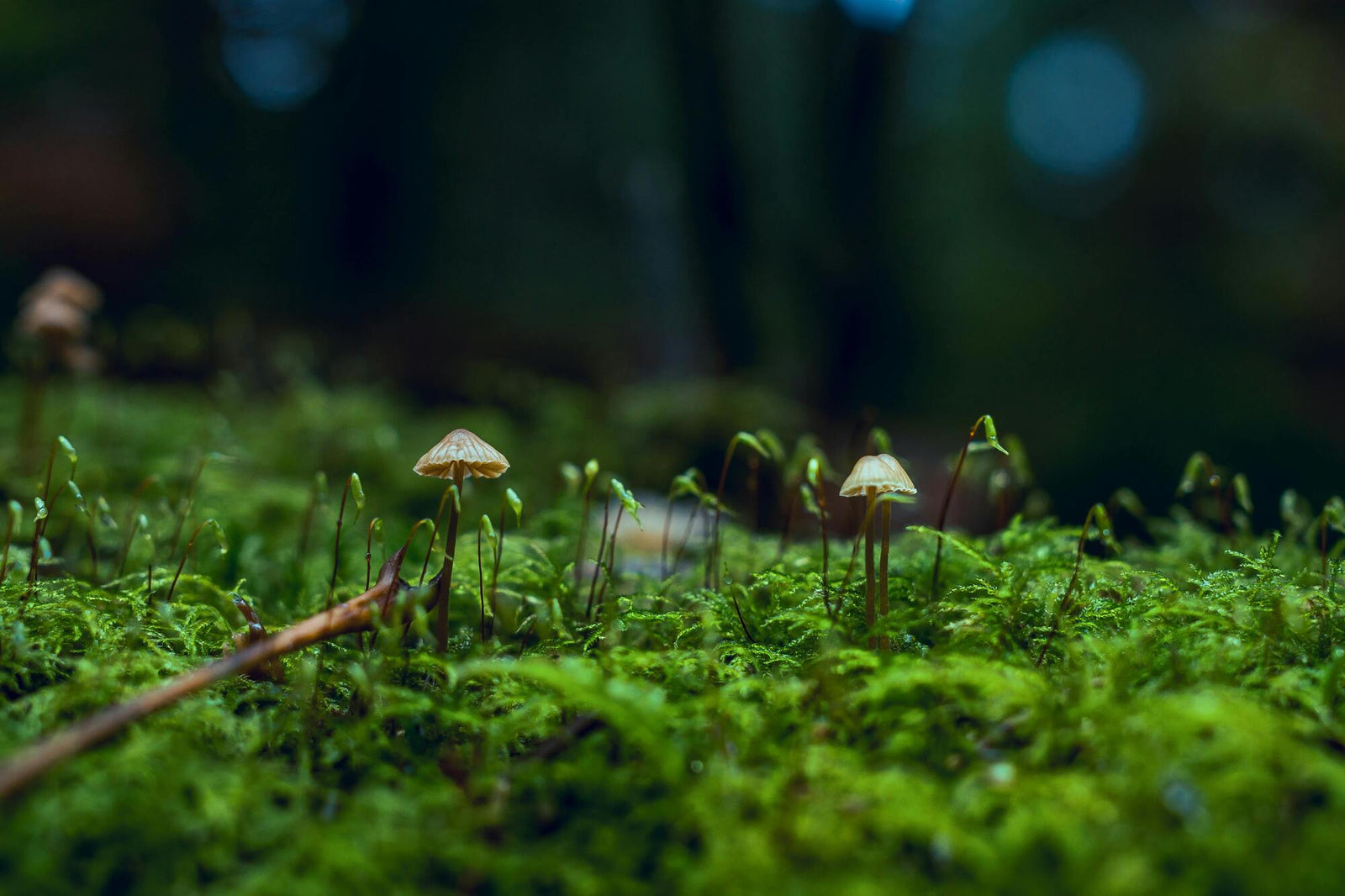Your Cart is Empty

June 29, 2020 13 min read
What is it about coffee that makes it such an integral part of our everyday lives? Caffeine aside, is it the irresistible aroma, the simple comfort of ritual, something we can enjoy alone or with others? The coffee phenomena offers a dose of all of these factors, and it’s hard to pinpoint just one thing we like best. Nevertheless, today we’re feeling brave enough to open up the conversation about coffee, sometimes passionate, sometimes controversial. Keep reading to discover the science behind its pros & cons.
While coffee undoubtedly stands behind numerous health benefits, it also comes with certain side effects as well. Given that its active stimulant, caffeine, affects our brain and its hormones directly, it wouldn’t hurt to learn more about the impact of our favorite beverage on our overall well-being.
When it comes to the origins of coffee, there remains a degree of mystery. However, there are different legends surrounding the topic of coffee’s heritage, such as the one that a goat herder named Kaldi was the first one to encounter these “magic beans”. The most common legend says that Kaldi’s goats accidentally ate coffee beans instead of berries, and became so energetic that they couldn’t even sleep at night (sounds familiar?). The goat herder was friendly enough to share the tale of the magic beans with the local abbot, who experienced the energizing effect of coffee himself later that night. While there is no written evidence backing up Kaldi’s story, it is certain that coffee originates from the Ethiopian plateau.

It is in the Arabian Peninsula that coffee started to gain the recognition that would ultimately lead to its current popularity. The coffee-drinking trend blew up around the 16th century, once it started to be served in public coffee houses across the Near East. It is in these coffee houses, called qahveh khaneh, that coffee transformed from an energizing beverage into a ritual, bringing people together. The “wine of the Araby”, as coffee used to be called, soon became an essential accessory to all conversations - even those that concerned important social events.
Coffee was introduced to the European population back in the 17th century, but the first impressions weren’t overly positive. The dark, mysterious drink from the Near East was first believed to be “the bitter invention of Satan”, and the stigma surrounding it became so big that the Pope himself had to make the final call. Luckily for coffee lovers all over Europe, the Pope loved coffee so much he gave it an official Papal approval! As far as America was concerned, New York was the first city blessed with the appearance of this beloved drink in the mid-1600s. When the riot against tea taxes, known as the Boston Tea party, occurred, coffee overthrew tea as the favorite American beverage once and for all. Coffee 1: Tea: 0.
Like it or not, caffeine belongs to the category of stimulants, and it’s currently the most used psychoactive substance in the world. Its effects are so strong that it has sometimes even been considered a drug that can be abused, a study on the neurologic effects of caffeine suggests. Now before jumping to any conclusions, it is important to clarify that caffeine cannot be compared to other narcotic substances, as it does NOT affect the dopamine release in the same manner. Coffee, without a doubt, contains the highest dose of caffeine among commercial beverages (71-220 mg/150 ml). However, caffeine is also present in smaller doses in other drinks, including tea (32-42 mg/150 ml), cola drinks (32-70 mg/330 ml) and cocoa beverages (4 mg/150 ml), as well as energy drinks. Ever tried a Red Bull? It’s not just sugar content making you feel that way.

How much caffeine do we actually consume in America? When calculating your daily amount of caffeine consumption, you’ll probably focus on coffee as the main source. However, caffeine can be found in numerous other soft drinks and foods, so your daily dose of caffeine may be much higher than you think. In this sense, it's a bit like salt. According to the aforementioned study, the average total amount of caffeine is approximately 76g/person/day. However, in certain countries, such as the United States, the dose may exceed 200g. In Sweden and Finland, on the other hand, caffeine seems to be a necessity since studies show that they consume more than 400mg of caffeine a day! What can we say, it’s cold in Finland!
However, a far more intriguing topic than the amount of the caffeine consumed are its effects on the brain and its dominant hormones. Keeping in mind that caffeine is a psychostimulant, there are studies comparing the impact of caffeine to those of cocaine and amphetamine. However, as we’ve already mentioned, the main difference lies in their dopamine-releasing activity. Caffeine does not have as strong of a dopamine-releasing effect, a study on caffeine effects states. Furthermore, the study goes on to explain that stimulants such as cocaine depend on dopamine release, while caffeine affects adenosine receptors. Nevertheless, caffeine still affects dopamine production to a degree, and as dopamine is known as the “happy hormone”, that explains the pleasant feeling associated with a cup of coffee.
Adenosine is a neurotransmitter in the brain, the role of which is to manage the feeling of sleepiness throughout the day. As it is released, adenosine binds to the cell receptors, slowing down nerve activity. What happens when we consume caffeine is that nerve cells mistake it for adenosine, since caffeine has been found to bind to adenosine receptors. In simpler terms, nerve cells can no longer recognize adenosine once caffeine takes its place.
Furthermore, the effect of caffeine on the pituitary gland promotes the release of adrenaline, also known as the “fight or flight” hormone - hence the well-known effects of coffee. The release of adrenaline stands behind all the effects of coffee, including muscle tightening, faster heart beating, dilated pupils, and higher blood pressure. These reactions further explain the arousement and excitement that a cup of strong coffee can trigger.

Quite possibly the most obvious benefit of coffee is its energizing effect that promotes our alertness and performance. According to a study conducted by A. P. Smith et al., caffeinated coffee has been shown to significantly boost performance levels in study participants when it comes to both daytime and nighttime tasks. On the other hand, the study suggests that decaf coffee yielded rather unimpressive results when it comes to the energy-promoting effect of coffee. Too bad for the caffeine intolerant!
For the many who follow an intermittent fasting (IF) regime, coffee may just become your new soul mate. Fasting periods can be rather challenging, especially if you’re new to the practice. The good news is that a cup of black coffee won’t break your fast, while providing the much needed energy-boost. A single cup of black coffee (240 ml) has only ~3 calories, and extremely small amounts of protein and fat. Therefore, the macronutrient composition of a single cup of black coffee (with no added milk or sugar) won’t cause a significant metabolic change, but it can certainly help you get through the fasting periods.
Have you noticed that every single fat-burning supplement contains a certain dose of caffeine? Caffeine is a well-known metabolism booster, promoting fat loss in both obese and lean individuals by stimulating the nervous system to start the fat breakdown process. What happens to the cells that have been broken down in this process? According to a study on the effects of caffeine, the remaining free fatty acids become available as fuel for the body to utilize. That being said, if you’re a long-time coffee drinker, this effect may not be as prominent in your case, as you’ve developed caffeine tolerance.
A study conducted by R. Huxley and colleagues presented rather promising findings when it comes to coffee benefits and diabetes development. Namely, the study reviewed the results of 18 different studies including a total of 457,922 participants. The study confirmed the clear association between coffee and diabetes, stating that daily coffee consumption is associated with a lower risk of type 2 diabetes development by 7%.

Coffee has also been found to promote skin quality and appearance in numerous aspects. For instance, caffeine has been shown to decrease the appearance of cellulite when combined with other beneficial ingredients. Furthermore, coffee consumption has also been associated with skin photoprotection - especially the reduction of pigmented spots. Caffeic acid found in coffee has also been linked to increased skin collagen levels and strong anti-aging effects, as it is a potent antioxidant. What’s more, caffeic acid exhibits antimicrobial properties, which makes it an efficient germ-fighting agent.
Finally, caffeine increases blood flow - tightening the skin and potentially reducing fluid under the eyes, which is the main cause of eye puffiness. In addition, chlorogenic acids found in coffee have anti-inflammatory properties, decreasing the overall inflammation around the eyes.
Unfortunately, enjoying too much of a good thing always has its downsides. As we’ve learned from the previous section, coffee certainly grants numerous health and beauty benefits - as long as you’re consuming it in moderation.
One of the potential health risks of excessive coffee consumption is coronary issues. A study conducted by A. Zhou et al. suggests that passionate coffee drinkers consuming more than 6 cups of coffee a day run at a higher risk of developing a heart condition. What’s more, large amounts of coffee could lead to significantly increased blood pressure, which is particularly harmful to those diagnosed with a cardiovascular disease. Furthermore, surpassing the 6-cup limit compromises overall well-being, causing poor health, a study on excess coffee consumption concludes.

The side effects of coffee when it comes to sleep quality are pretty much self-explanatory, but certainly worth mentioning. One of coffee’s most prominent activities is its adverse effect on sleepiness, due to all the aforementioned chemical processes in the brain. Correspondingly, high doses of coffee (and caffeine, for that matter) have been linked to sleep disturbances - even insomnia development.
Furthermore, it seems that coffee and pregnancy do not quite go hand-in-hand. According to a study on caffeine consumption and female infertility, caffeine consumption interferes with important fertility processes, such as the movement of the eggs toward the womb. Furthermore, pre-pregnancy caffeine consumption in both males and females has been associated with increased risks of pregnancy issues. Though some pregnant women continue to consume coffee during maternity, a healthcare professional should be consulted beforehand.
As caffeine is very much responsible for the adrenaline boost we get with coffee, as well as its effect on heart rate and pressure, it’s no wonder it largely impacts anxiety. Coffee consumption has been shown to promote nervousness in anxious individuals. Furthermore, those suffering from depressive and panic disorders, as well as social anxiety are particularly sensitive to caffeine.

If you’re not too familiar with the historical aspects of coffee, you may not know about different waves of coffee development. The first wave began in the 1960s, with the global popularization of coffee. The second wave occurred when coffee became widely accessible with the expansion of coffee shops worldwide such as Starbucks. Basically, we could conclude that wave 1.0 and wave 2.0 were all about popularization and expansion, so now that coffee is globally recognized, what does wave 3.0 stand for?
Take our quiz and find which supplements your body is craving.

The coffee 3.0 wave focuses on the infinite details that, in fact, make all the difference. (As they say, God is in the details.) According to advocates of this wave, the way coffee is grown and brewed should be anything but traditional, focusing on emphasizing all the possible benefits, taste included. A cup of coffee should be more than just that - and it should represent a special experience for the consumer. Nevertheless, the essence of the coffee 3.0 wave does not lie in fancy coffee shops, but rather in consumers’ creativity and individuality. It’s all about embracing your inner barista and creating your perfect coffee customization at home.
Unroasted, raw, or green coffee is one of the best representatives of the coffee 3.0 wave, as it entails a completely unique coffee-making process. As the attributes “unroasted” and “raw” imply, this coffee requires no prior coffee bean processing, which is believed to preserve all the coffee health benefits lost in the roasting process. Raw coffee has been associated with impressive effects, such as weight loss and anti-inflammatory activity. Nevertheless, you should not expect raw coffee to taste or look anything like traditional roasted coffee - although all the health benefits are worth it!

Coffee roasting (or lack thereof) certainly does make a huge difference in the taste of your coffee, and as we’ve just learned, in its beneficial effects! However, when it comes to experimenting with your coffee, we shouldn’t forget about all the different brewing techniques that’ll make you fall in love with the process. The most popular at-home coffee brewing techniques include Chemex (bleached or unbleached filter coffee), pour over coffee drip brewing, the V60 brew method, and a ceramic dripper. While these brewing methods are essentially quite different - there’s one thing that they have in common: brewing has become ritualized and accessible right in the comfort of your own home. Professional tools are available to purchase online and coffee workshops on how to perfect your craft coffee at home are now in abundance.
Bulletproof coffee must be one of the most-talked-about trends in recent years, not only in coffee culture, but in the world of fitness and nutrition. In case you’re not familiar with the concept, the ingredient list might surprise you, as one of the main components of this beverage is butter. Bulletproof coffee is considered a perfect start to your day due to its high fat content, with the addition of butter and MCT oil. The benefits of consuming bulletproof coffee include alertness, increased energy throughout the day, promoted metabolic rate, and suppressed appetite. What makes this coffee even more bulletproof is the addition of collagen powder and CBD oil. The additions of these powerful ingredients joined with healthy fats and coffee create an unbeatable combination of health benefits further discussed in our CBD & collagen bulletproof coffee guide.
While on the topic of unique coffee 3.0 wave variations, we cannot skip one of our personal favorites - collagen coffee. What’s particularly interesting about it is that you can transform any cup of coffee into collagen coffee, whether it be black, flat white, cappuccino, cafe latte, pumpkin spice latte, or a frappuccino. The only thing to remember when making any type of collagen coffee is the order in which you add the ingredients, and we’ve got that covered in our handy collagen coffee guide. A single scoop of all-natural Collagen Peptides powder can turn a simple cup of coffee into superfood, allowing you to grab all the benefits of the mighty protein. As the most prominent bodily protein, collagen has been found to promote skin health and appearance, protect joints, ligaments, bones, muscles and connective tissues while promoting their flexibility, aid in weight loss, boost lean muscle mass, and promote the structure and health of nails and hair - among numerous other benefits.
Life is too short for your coffee to be dull, so we highly encourage you to experiment and embrace the coffee 3.0 wave. And even if you’re staying loyal to your trusty old cup of regular coffee, at least now you’re familiar with all the benefits, as well as potential side effects, of your favorite beverage. For more all-natural, non-GMO supplements, head over to our online store.
The origin of coffee comes from the Ethiopian plateau.
Coffee was initially slow to be adopted. Once it caught on, its popularity spread rapidly.
Caffeine is a recognized psychoactive substance even though its effects cannot be compared to those of narcotic substances.
Caffeine affects the release of dopamine and adenosine, ultimately leading to adrenaline release.
Coffee promotes energy and performance, fat loss, and also has benefits for the skin.
Side effects of excess coffee include increased blood pressure, probnlems sleeping, anxiety, and potential fertility problems.
Coffee 3.0 focuses on roasting, brewing, and adding ingredients like collagen to increase health benefits.

March 20, 2025 8 min read
Discover the benefits of creatine for women with Amandean’s Creatine HCI. Improve strength, energy, recovery, and cognitive function with this high-absorption formula. Its advanced HCl form ensures easy digestion and no bloating, providing all the benefits without the drawbacks. Elevate your fitness journey and overall wellness with a supplement designed for women’s unique needs.

March 03, 2025 7 min read
Discover how Bryan Johnson, a tech entrepreneur turned biohacker, uses cutting-edge science and personalized genetic testing to revolutionize health and longevity. Learn how biohacking, from diet to mental health practices, can help you live longer and healthier, with practical strategies to optimize your well-being. Find out more about genetic testing, and ways to implement results into your wellness routine.

February 19, 2025 6 min read
Explore the remarkable health benefits of medicinal mushrooms like Lion’s Mane, Turkey Tail, Chaga, and Reishi. These superplants support immune function, reduce inflammation, and boost brain health. Learn about Amandean's Brain Health supplement, combining Lion’s Mane, Magtein, and Alpha-GPC for optimal cognitive performance.